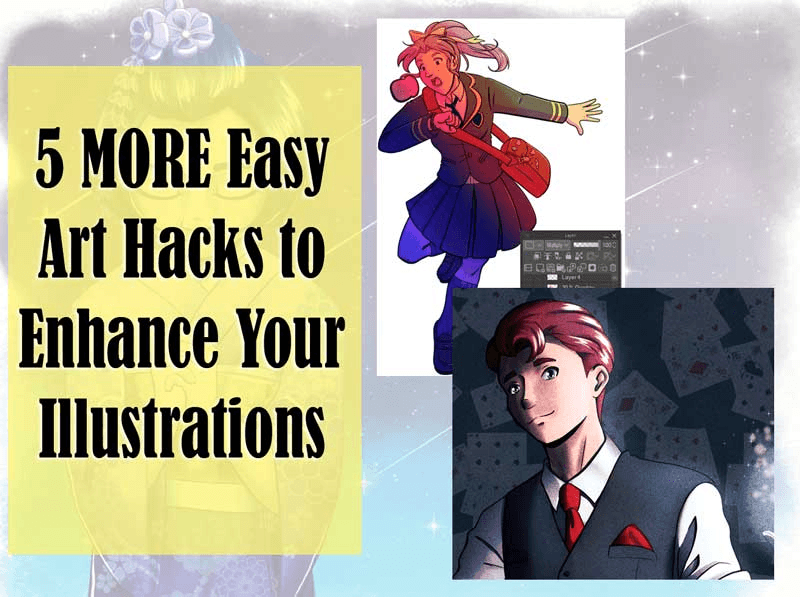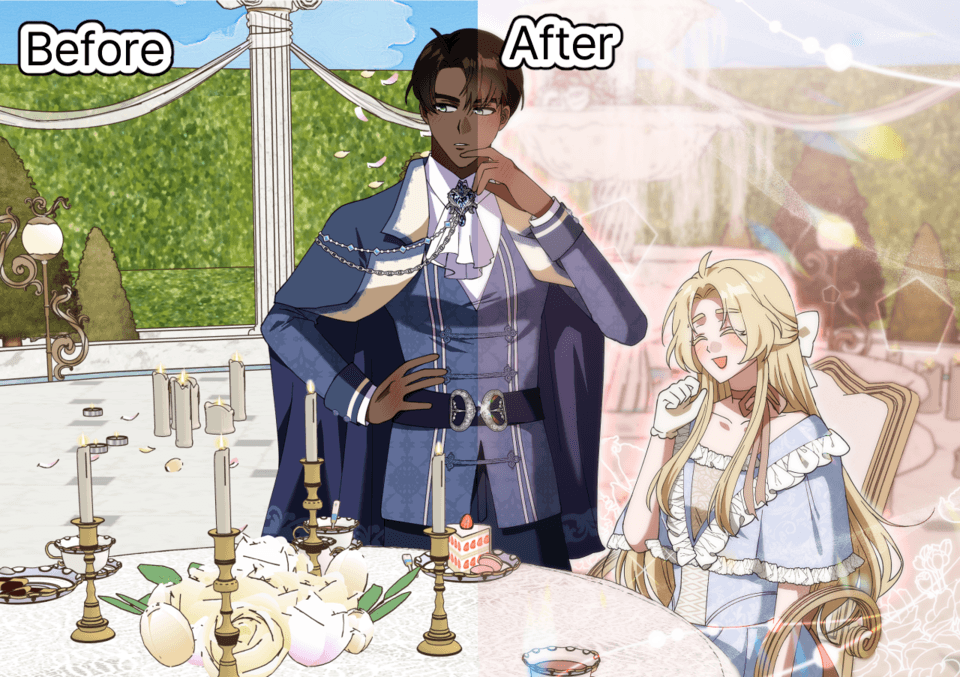Inbetweening basics
Animation: Breathing life into lines
Animation is an expression method that creates the illusion of movement by showing subtly different pictures in rapid succession. Using CLIP STUDIO PAINT, anyone can easily make an animation.
However, animating anything beyond a simple shape, such as a complex drawing, will be difficult for the beginner. If you are just starting out, there are many advantages in learning basic techniques when animating motion.
In this lesson, we go into basics of animation and introduce professional methods.
[1] Pose to pose
One of the most popular methods when making animation is “Pose to pose”.
Here, significant poses in a motion are drawn first, with the drawings in between drawn later.
Keyframe (Japanese: Genga, 原画)
The significant poses are drawn first. In traditional anime production, these drawings are called “genga” or “keyframes”.
The above shows where the keyframes are placed.
Inbetweening (Japanese: Douga, 動画)
The frames between the keyframes are drawn to smooth out the motion. This step is called inbetweening. In anime production, the resulting frames are called “douga”.
We will go into detail on douga later in [3] Douga.
[2] Principles of motion
In animation, it is necessary to express how physics work and create believable motion. As they dictate motion, keyframe drawing requires a good understanding of the principles of motion.
When drawing motion, try to remember the following basic principles.
Follow through (Japanese: Nokoshi, 残し)
Based on the motif, there will be a delay between the center of an object and its extremities. This motion is called a “follow through”.
In the example, the tips and the fixed top part of the tuft have a delay, as the tips should continue to move after the spear has stopped due to inertia.
Change the timing and shape of an object to express materials and weight in the animation. The follow through is good for long hair and cloth.
Anticipation
Say we want to animate a jump. You will soon realize that humans need to bend their knees before jumping. This entry motion is called anticipation.
Accurate observation is a key to the deep understanding of anticipation. Always keep in mind that large movements and quick movements will have some anticipation, observe them carefully.
Slow-out/Slow-in
In animation, the gradual acceleration of a moving object is called a slow-out. In contrast, the gradual deceleration of an object is called a slow-in. The frames of a slow moving object should near each other, with the opposite being true with a fast object.
Realistic motion that follows physics or anime-like exaggerated motion can be expressed through the effective use of slow-out/slow-ins.
[3] Douga
“Douga” in anime production specifically means materials that have movement, as opposed to “moving image”.
In traditional animation, completed genga are not used directly and are traced. The douga staff then inbetween the traced genga. This inbetweening is called nakawari (Japanese: 中割り), and the resulting sequence is called the douga.
Note: The roles above are specific to traditional anime production, and are expected to change with the spread of digitization.
[4] Tips when inbetweening
Inbetweens are crucial to the quality of a sequence. Some may think that inbetweening is easy, as the keyframes determine the movement.
However, many soon realize that is not the case. As the final quality of the motion depends on this step, the smallest cut corner will result in choppy motion.
Using techniques such as the ones below, try to optimize your workflow and express fluid motion.
Motion arc
A motion arc is a line that indicates the trajectory of a motion. An arc contains dots that specify frames.
When drawing an arc, it is important to picture the motion that is happening between the keyframes.
Shift and trace (Japanese: Tap wari, タップ割り)
“Shift and trace” is a technique used to draw accurate inbetweens more easily by overlaying keyframes that are far apart.
How to shift and trace
1. Say the following are keyframes.
2. The inbetween should be between the keyframes, with the face somewhere around the area shown below.
3. To get an accurate idea of where the inbetween will be, we will draw a motion arc and find the middle point. Here, we have drawn the chin’s arc.
4. Move the keyframes so both chins align on the middle point. This will overlap the heads, acting as reference for the inbetween.
5. The face is done. Like this, shift and trace overlays keyframes as reference.
Inbetweening order
If we want to add three inbetweens to two keyframes, we start from the middle inbetween. Let’s look at the inbetweening order.
1. First, we draw Inbetween (3), which is the middle of Keyframe (1) and (5).
2. Next we inbetween Keyframe (1) and Inbetween (3).
This new inbetween is Inbetween (2).
3. Finally, we inbetween Inbetween (3) and Keyframe (5).
This becomes Inbetween (4).
4. The inbetweening is done.
Final words
An animator is a “drawing job”, similar to a comic artist or illustrator. However, an animator does not necessarily need to think of stories like a comic artist or handle the entire designing and color process alone.
What an animator “thinks” and “designs” is time. What pose connects to what pose. How many frames should there be. What timing to use. How the pacing works. An animator is required to figure these details out at the 1mm or 1/24 second scale.
However, there is no difference between pros and amateurs when it comes to the basic enjoyment of animating things. Digital tools will continue to broaden the horizons of animation, even more than the pencil or watercolors.
























Comment